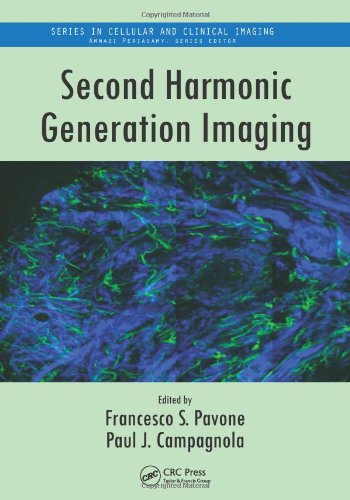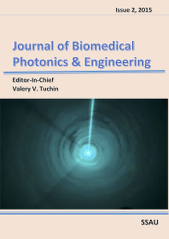Vol 1, No 1 (2015)
- Year: 2015
- Articles: 8
- URL: https://jbpe.ssau.ru/index.php/JBPE/issue/view/122
Full Issue
Reviews
Tissue Optics and Photonics: Biological Tissue Structures
Abstract
This is the first section of the review-tutorial paper describing fundamentals of tissue optics and photonics mostly devoted to biological tissue structures and their specificity related to light interactions at its propagation in tissues. The next sections of the paper will describe light-tissue interactions caused by tissue dispersion, scattering, and absorption properties, including light reflection and refraction, absorption, elastic quasi-elastic and inelastic scattering. The major tissue absorbers and types of elastic scattering, including Rayleigh and Mie scattering, will be presented.
 3-21
3-21


Optical clearing of biological tissues: prospects of application in medical diagnostics and phototherapy
Abstract
 22-58
22-58


Articles
CHANGE OF OPTICAL PROPERTIES OF HAIR CELLS DURING MALIGNANT TUMOR DEVELOPMENT
Abstract
 59-63
59-63


LINE OPTICAL TRAPS FORMED BY LC SLM
Abstract
 64-69
64-69


Lung neoplasm diagnostics using Raman spectroscopy and autofluorescence analysis
Abstract
 70-76
70-76


OCT/LCT monitoring of drug action on the structure of the human cornea in vivo
Abstract
The effect of anti-glaucoma medicinal prepaprations Timolol-AKOS and Cosopt on the structure components of human eye cornea are studied. The eye drops Timolol-AKOS 0.5% and Cosopt were used as the object of study. 10 voluntary patients of the Eye Disease Clinic aged from 70 to 75 suffering from glaucoma took part in the studies. The study of cornea in vivo was carried out using the methods of laser scanning confocal tomography (LCT) and optical coherence tomography (OCT) before the application of drugs and at different time moments after the application. The eye cornea thickness values measured using the OCT at the initial moment of time and at different times after the application of the medicinal preparations are presented. From the LCT data the density and the mean diameter of the cornea epithelial cells was calculated. As a result of the complex studies carried out, it was shown that the Timolol-AKOS medication causes the swelling of the cornea within the limits of 1-5%. Under the use of Cosopt medication the cornea dehydration was observed.
 77-80
77-80


A pulsed photoacoustic technique for studying red blood cell sedimentation
Abstract
This study shows the capability of a pulsed photoacoustic (PA) technique to measure red blood cell sedimentation and aggregation processes in vitro. Red blood cells are the main source of absorption in blood. The PA signal is proportional to the sample’s optical absorption coefficient, and hence, dynamic changes in the sample can be monitored by analyzing the PA pulse amplitude and pulse arrival time. Optical coherence tomography (OCT) is used as a parallel method for comparison. Diluted whole blood and different concentrations of washed red blood cells were used as samples. The pulsed PA technique is suitable for monitoring changes in sedimentation velocity when dextran is added to the sample. When the measurement section with the fastest sedimentation rate was selected for analysis, a more than 10-fold increase in the sedimentation rate, induced by dextran, was found with both the PA and OCT techniques. The PA pulse delay was found to be a more reliable measure of changes in the sample than the PA signal amplitude.
 81-89
81-89


Quantification of Mouse Embryonic Eye Development with Optical Coherence Tomography In Utero
Abstract
 90-95
90-95











